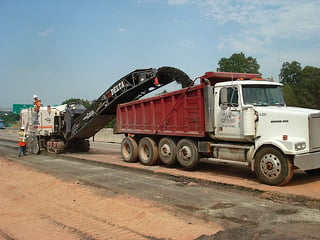Perpetual pavement is a flexible but strong asphalt pavement that doesn't exhibit structural damage even when very high traffic flows over long periods of time. They’re made up of multiple layers of durable asphalt. The bottom layer is designed to be strong but flexible to resist strains that could cause cracks to form from the bottom up. A similar intermediate layer adds additional structural protection, and the final layer, made of rut-resistant hot-mix asphalt (HMA), requires only minimal maintenance.
These surfaces have been around a long time. Some of the oldest perpetual pavements have been around since before the 1960s. The surfaces created then that were well designed and executed have provided very long usefulness without much maintenance even with heavy traffic. These days, advancements in milling, recycling, and asphalt production technologies make it even more likely that perpetual pavements will perform better and longer.





